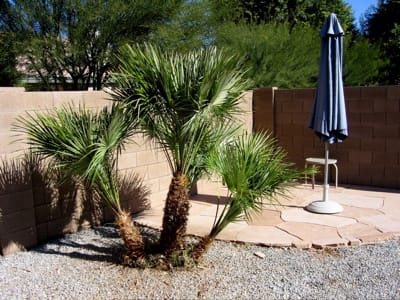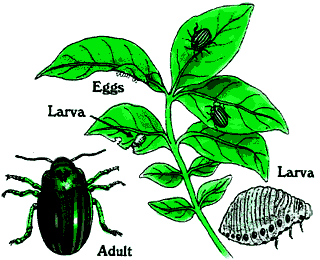The Basics Of How To Grow An Organic Garden
Read on some new organic ideas in the following article.
Make sure that your sod properly.Pull any weeds and loosen the soil so the new roots can take easily.Make sure the soil is packed firmly and compacted. Make sure you work with a moist all the way through.Lay the sod down in alternated rows, and make sure the joints do not overlap.
Lay sod properly. Before you lay the sod, the soil has to be prepared. Remove the weeds, then break up the soil into fine tilth. Compact the soil lightly and firmly, and be sure to create a flat surface. Thoroughly water the soil. Lay the sod down in alternated rows, keeping the joints set off from one another. Even out the surface of the sod by firming it down flat, filling any available gaps with a handful of dirt. After two weeks of daily watering, the sod should be rooted; at this time, it is now safe to walk on it.
Plant perennials that are resistant to slug and snails won’t be interested in eating. Slugs or snails are voracious eaters that can kill a plant in one night. These pests gravitate to young perennials with smooth, herbaceous stems and leaves, and thin. Some varieties of perennials are not preferred by snails and slugs, however, leave a bad taste in slugs’ mouths or are difficult to chew through because their leaves aren’t tender. Some of these plants include achillea, campanula, euphorbia, helleborus, and euphorbia.
Plants all need C02 to grow properly! Plants will not thrive in environments where high levels of CO2. The best way to get a lot of carbon dioxide is by growing them in a greenhouse.
Pre-soak your seeds overnight in a dark area. This will give your seeds a healthy head start when growing. The seeds will have a greater chance of maturing and surviving.
If mildew is forming on your plants, you should not purchase an expensive chemical. Mix some baking soda and a very small amount of liquid soap into water. Once a week, spray this on plants to eliminate the mildew. Baking soda treats the mildew effectively and gently and it won’t damage your plants.
Make a landscaping plan before you dig your garden. This will assist you remember where each plant was planted before they start to pop up.
You should make sure to divide irises. You can increase your stock of irises by splitting clumps that are overgrown. The bulbs, and after you replant them, should easily split by hand – allowing you to replant them for even more blooms next spring. You should split up rhizomes using a blade. Cut new pieces from around the outside and discard the remaining center. Each new piece must have a minimum of one healthy offshoot. Replant your new rhizome pieces right away.
You can keep pests from your garden by using other plants or natural materials. Slugs are repelled by bordering your vegetable garden with a patch of marigolds or marigolds. Using these methods will reduce the need of chemical pesticides.
The approach of fall means you need to start planting autumn goodies. Why not plant lettuce and kale inside a hollowed-out pumpkin? Cut an opening in the pumpkin and scoop the insides out. Then spray the edges and empty inside of the pumpkin with Wilt-Pruf so the pumpkin doesn’t rot. After that, your pumpkin planter is ready to use!
You may want to think about having evergreens that will produce berries into your yard. Some examples include Holly, Cranberrybush, the American Cranberrybush and the Common Snowberry.
Chamomile tea is effective treatment against fungus attacking plants.
Don’t use broad-spectrum pesticides that aren’t meant to kill specific types of garden pests. These pesticides also kill useful insects that eat the pests. Bugs that are good for your garden tend to be more susceptible to these types of pesticides, you may simply end up with a bigger pest problem.This may then lead to using even more pesticides to fix the problem.
One very good way to deal with weeds is to boil them away. Water is cheaper than chemical herbicides, and less hazardous to humans and soil. Although this method is organic, it does pose a danger to your plants. The extreme heat of the water will cause damage to the weeds’ roots, which will stop them from growing any more.
Choose a specific plant as a focal point. The best focal point should be a plant totally different from those that are adjacent.
Keep your horticulture tools handy to work more efficiently.
Don’t let all the chores for your organic garden build up. Even if you can’t tend to your garden daily, you can try little things that will prevent you from having a lot of work when you return to your garden. For example, if your family is cooking out on the grill, take the time to pull out a few weeds.
To keep dogs from disturbing your garden, spray some old aftershave, cologne, perfume or other strongly-scented products in the dirt or grass surrounding it. This can make scents that dogs are attracted to, and make your garden less interesting in general for pets.
When setting up an organic garden, a great tip is to plant another set of tomatoes after three weeks of planting the original ones. This way you a steady supply to tomatoes and reduce an overabundance at once.
When it’s time to dig a hole for a shrub or a tree in an organic garden, try digging an ugly hole to plant them in. If the sides of the hole show glaze which was caused by the shovel, it’s possible that one of those holes will restrict any root from getting into the soil nearby.
Use at least 3″ of organic material to mulch trees and flowers. This aids in environmental conservation and help it retain moisture more efficiently – which should help you serious money on water bills. You can look quite great as well.
Take care of your knees while working in the garden. Most people can’t bend for long periods while standing. If you have trouble with this, kneel instead of bending while gardening. A kneeling pad can be placed under your knees to help reduce the pain from compression.
Know when to buy plants that you will use in your garden. This holds very true when you purchase perennials or annuals. You must see to it that are budded but not in bloom. This will enable them to start growing stronger roots in your garden.
Organic Compost
Leaves make for a good organic compost that you can mix with soil. This is a cheap and sustainable way to get organic compost that will benefit your garden.
Try to work in your garden at least a short time each day. No matter what your schedule is like, you should be able to fit in small things that will help you avoid having an overwhelming amount of work all at once. For example, if you are playing in the yard with your child, take a few moments to pull some weeds as well.
Use barrels to trap the water for your garden. This will help reduce costs of money in water bills. Rainwater also does not contain the added chemicals that tap water.
Be an eco-friendly gardener and use rainwater for your plants. Using a barrel or any sort of container to collect any amount of rainwater can not only save you money on your water bill every month, and make the best use of your naturals resources.Think about doing this alternative choice; stay natural and save money.
Dwarf Fruit Trees
Gardening can not only be an excellent hobby for consuming time, but is great for saving money and aiding a healthy diet. Organic gardening allows you learn the entire plant cycle, from the beginning to the end.
Dwarf fruit trees are ideal for a small sized garden. Many gardens within city limits don’t have space for full-size trees, and that is where dwarf fruit trees fit in best. These tiny trees produce regular sized fruits and produce fruit after about four years from planting.
The more you know about organic horticulture, the easier your horticulture will be. Keep in mind that the tips offered here are only a few of the great things that you can learn.








